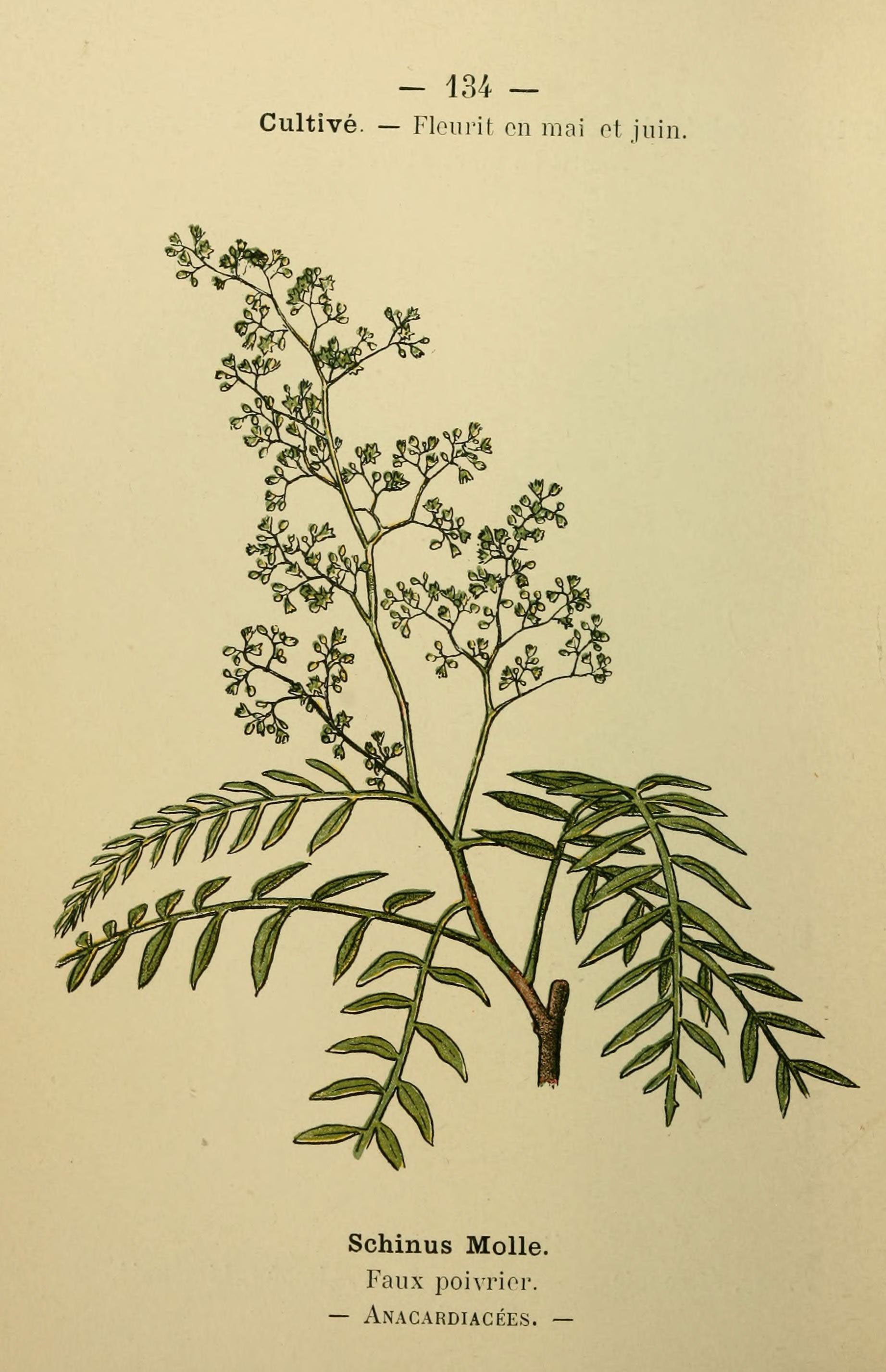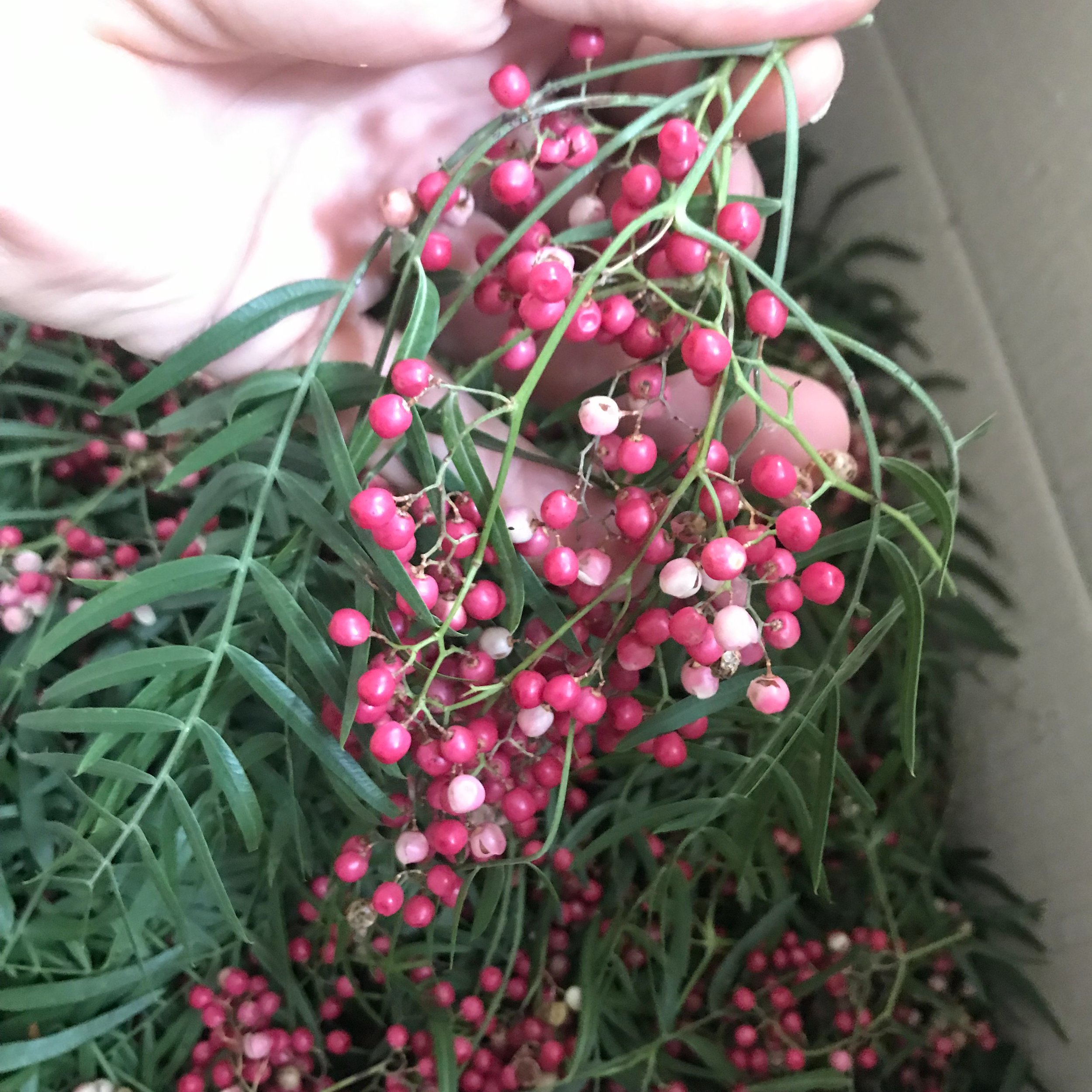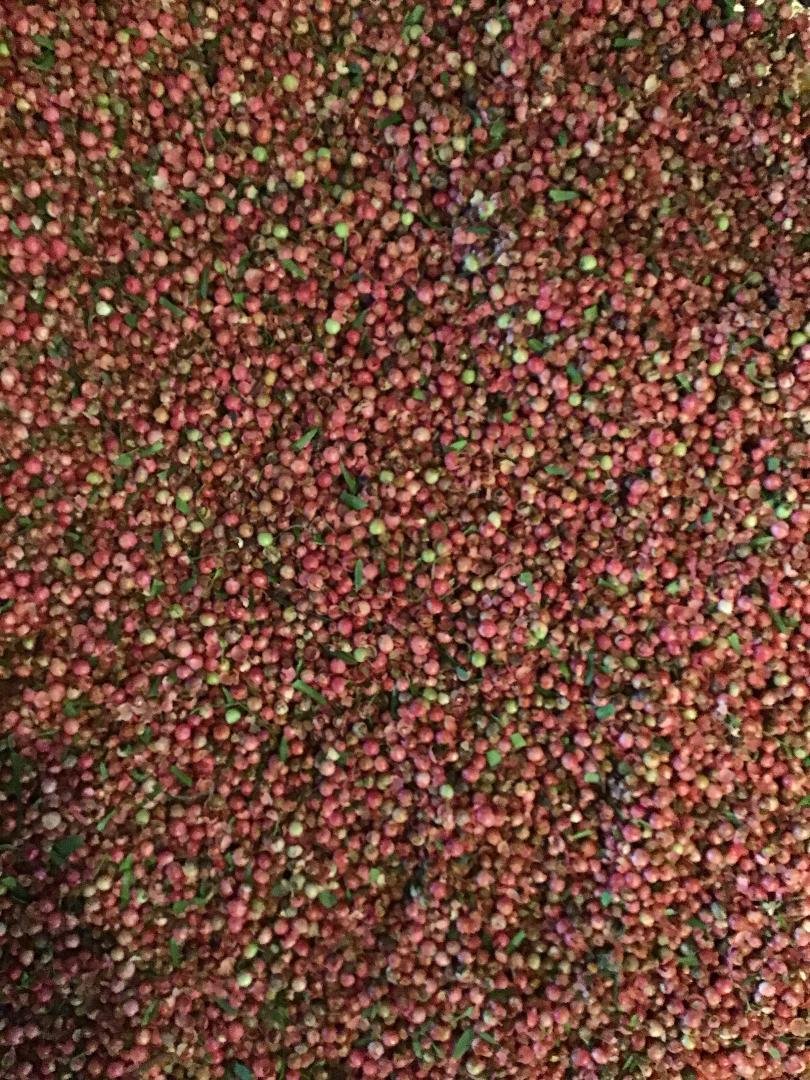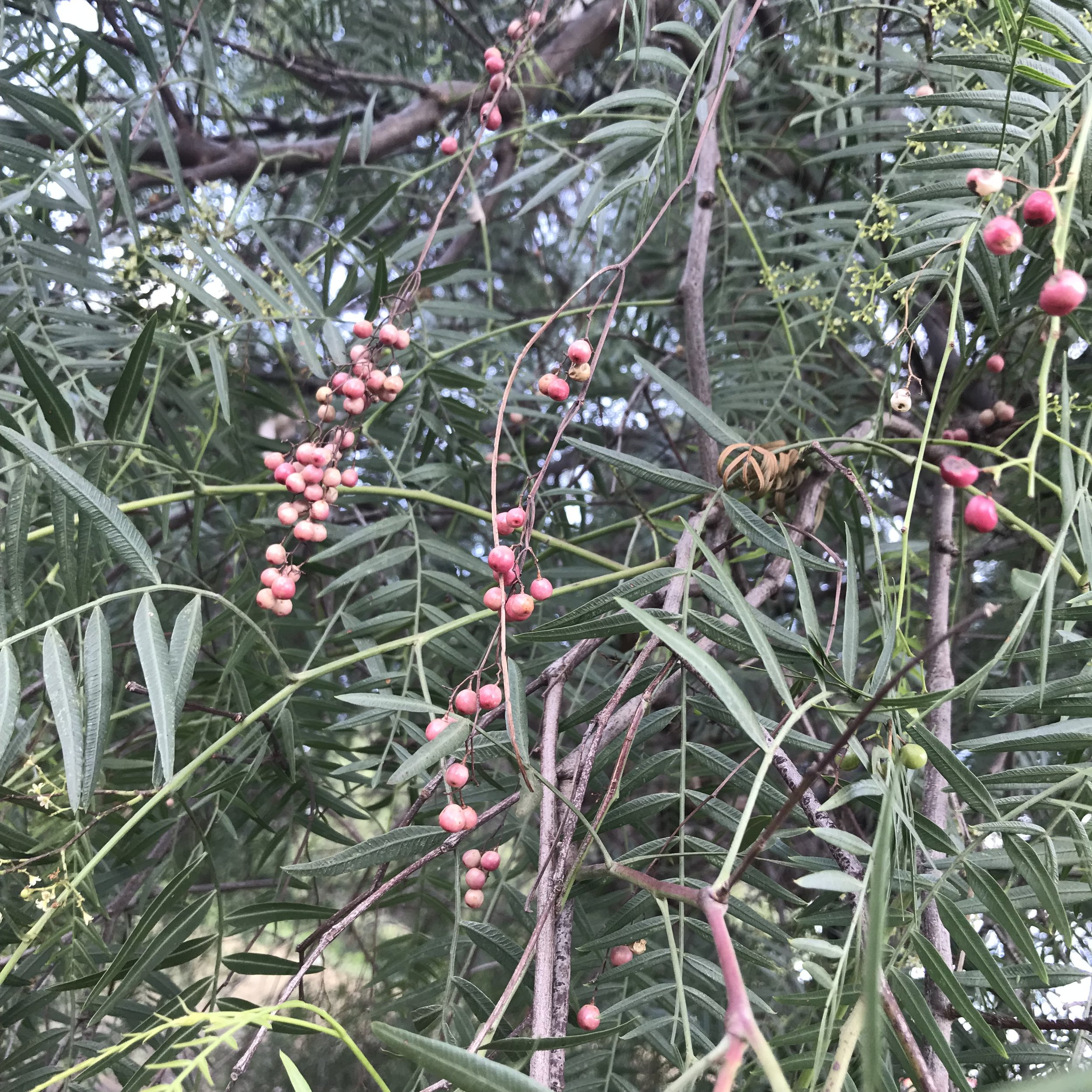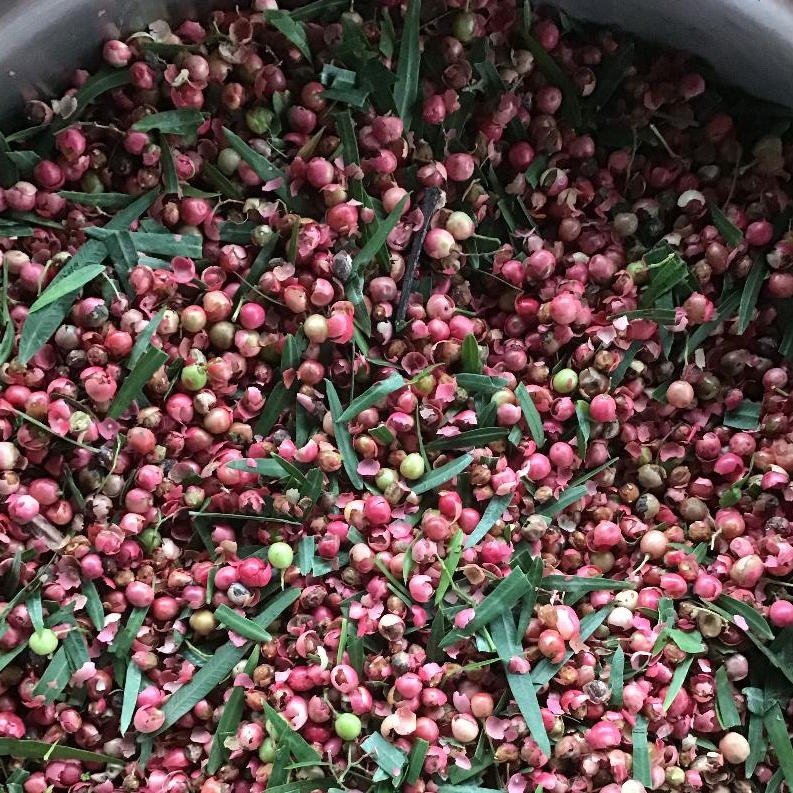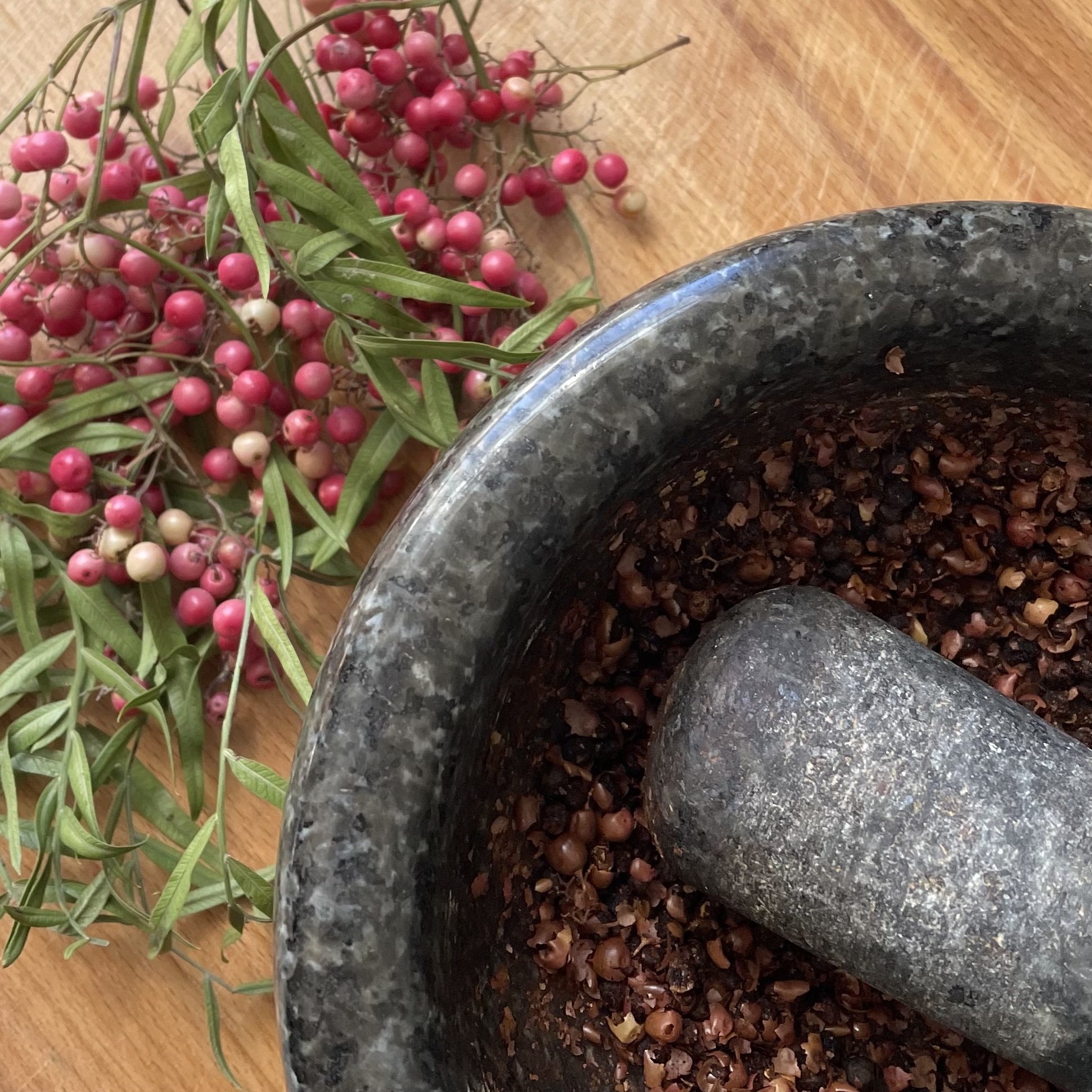Pink peppercorns, on a tree near you.
Pink peppercorn or peppercorn tree
Schinus molle
The pink peppercorn is widely planted as an ornamental and street tree in all states and territories of Australia, from Townsville in Queensland, all the way around to Alice Spring and across to Carnarvon in Western Australia. It is drought-tolerant and will flower and fruit for extensive periods – offering a readily available spice wherever you are and whenever you need it. Originally from northern South America, it is now found in warm climates all over the world.
A great way to recognise this tree is by scent, as when you crush the leaves you will instantly notice the very distinctive – in fact, unforgettable – green pepper aroma: sweet, spicy, floral.
There are two varieties of peppercorn trees in Australia, the small leaves one Schinus molle, edible and widely distributed, and the big leaves one Schinus terebinthifolia, found in more tropical areas and not reputed as edible.
Identification
The pink peppercorn tree is a handsome evergreen, growing up to 12 metres high, with a wide canopy and weeping form. It develops long branches, and when it is in fruit the red-pink berries make for a beautiful garden feature.
Leaves
The long, feathery, compound leaves (formed from fifteen to forty-one leaflets) are arranged alternately on the stem, and hang from the drooping branches.
Flowers, fruit and seeds
Clusters of white flowers develop in springtime, which then produce grape-like bunches of small, red-pink fruits, 5–7 millimetres across, which hang from the tree. The grape-like bunches can be up to 30 centimetres long and when in full colour are quite striking and highly noticeable. These fruits persist on the tree for months, turning cream-yellow as they dry. Each fruit contains a small, spherical, brown-black seed, 3–5 millimetres across – the peppercorn.
Pink peppercorns as food
The fruit from the tree is regularly sold as ‘pink peppercorn’, often replacing traditional pepper (which is not related) in certain dishes. It can be used as a spice in a variety of recipes, both savoury and sweet. As the seeds are quite oily, it is not easy to grind them when fresh, so it is best to dry them fully first. I use the berries sparingly as a spice when I cook (it is rather hot), and love their floral flavour. I add them to roasted potatoes as a spice, and my wife mixes them in with dates, chocolate and almond flour for some very popular energy balls that we offer at big gatherings or festivals.
In Mexico, the fruit is ground, mixed with agave juice and then fermented to make alcoholic beverages. I collaborated with Sydney-based Archie Rose Distillery in producing a gin distilled from pink peppercorns, for a special edition featuring wild-harvested botanicals.
Please note that you should treat the berries as pepper, hence only ever ingest small quantities or use as a spice.
Medicinal Uses
In traditional medicine, S. molle was used in treating a variety of wounds and infections due to its antibacterial and antiseptic properties. It has also been used as an antidepressant and diuretic, and for toothache, rheumatism and menstrual disorders, with recent studies in mice providing possible support for its antidepressant effects. It has also been speculated that S. molle's insecticidal properties make it a good candidate for use as an alternative to synthetic chemicals in pest control.
Fresh green leaves in bunches are used shamanically in Mesoamerican traditional ceremonies for cleansings and blessings.
Disclaimer: This information should be used as a guide only. It is not my intention to advise anyone on medical conditions, rather I'm just presenting a new way to look at the plants growing in your yard.
Let me help: if you are unsure about the identification of your plants tag me in a picture or comment below, and I’ll endeavour to help.
Further links
ChemTech : Scientific research on the use of peppercorns as anti-fungal
Plant for a Future: A review of Pink Peppercorn edibility
Trove: an article about Peppercorn trees from 1884 on the Illustrated Sydney News
Tropical Plants Database: A review of Peppercorn tree including medicinal properties
Atlas of Living Australia: Distribution range of Peppercorn trees in Australia
Wikipedia: On Peppercorn tree




